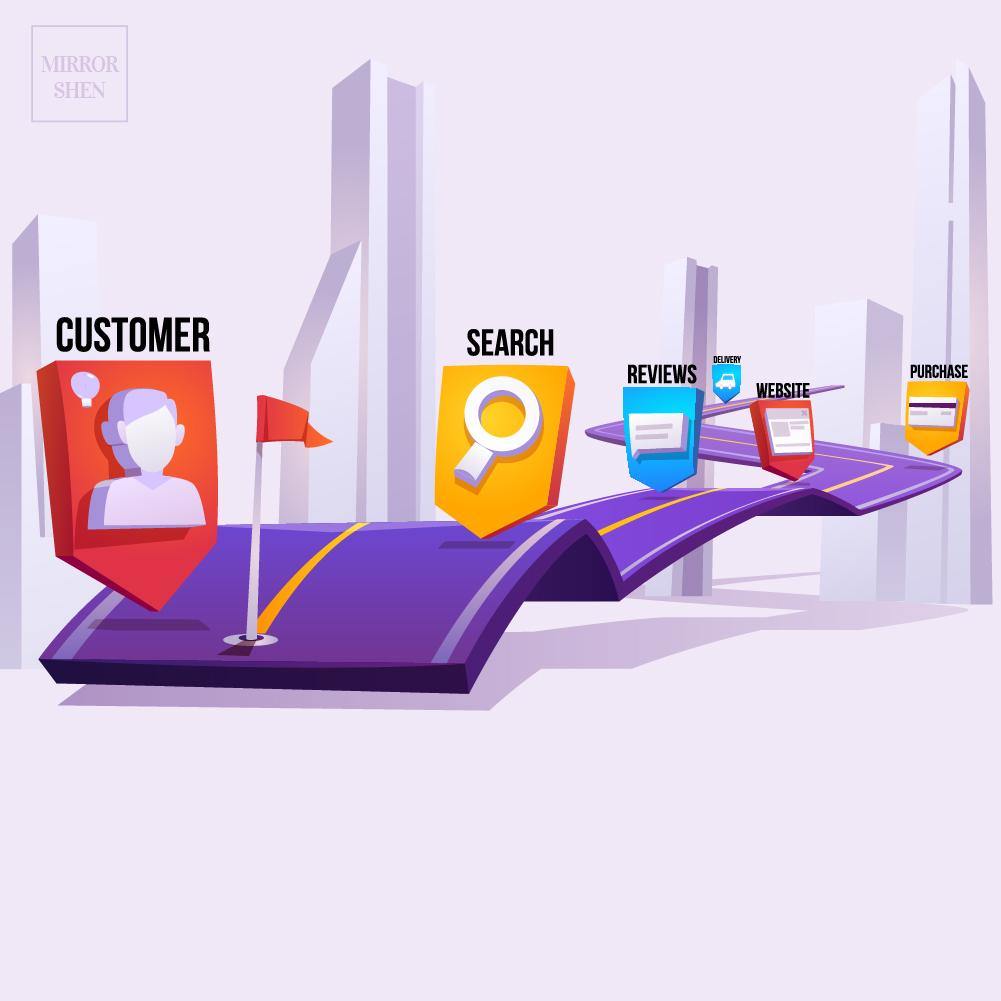
Understand customer journey and improve usability

Before doing design for any advert, first thing we need to think:
- What to achieve: What results you are aiming to get
- Who are the audiences: Who do you want to target and get attention.
- Where is the media platform: Traditional offline or Digital Online.
- How to present the media format: Media specs depend on above options.
After above consideration, we can start brainstorming the content for marketing strategy. But one more thing to think deeper is the media platform because the usability is completely different. The marketing goal is to connect with Customers, so understanding Customer Journeys is very essential.
💡 Offline Customer Journey
Before digital technology comes to our life, the way we noticed an Advert Campaign is simpler. We walked past billboard or bus ads, or browsed magazines or newspapers. In traditional shopping, we CHOOSE what we want to read and process further information.
Customers make decisions based on price, quality, returns policy, friendliness of staff, and stock availability. They process all that information, head back to the store with the shoes they liked best, and make the purchase.
💡 Online Customer Journey
Digital technology changed the game. On top of the traditional way, we got ads everywhere on computer and mobile phone. It’s actually quite overwhelming and our attention won’t stay long cause the next promotion will pop up soon. We are FORCED to receive information and be pushed to make quick decisions while we still remember it.
👉 The 5 stages of customer journey
-
Attention stage:
You notice products from street, social media posts or ads and this inspires you to do something. -
Interest stage:
You start your research. This introduces you to a whole lot of online content, from blog articles to targeted ads, giving you more factors to base your decision on. -
Desire stage:
Now you are convinced and really want it. Just need to choose between different platforms to consider price, shipping, and after sales services. -
Action stage:
Eventually, you make your purchase from the winners. -
Share stage:
Perhaps you will post a photo on social media, sharing your purchase and experience.
🤓 Keep in mind
Customers don’t necessarily experience all 5 stages every time - might begin at the Interest stage, or end at the Action stage. A successful Campaign is to track them and keep them engaged.
💡 Customer Behaviour
👉 Customer touchpoints
Touchpoints are HOW customers interact with a brand, from start to finish. For example, customers may find your business online or in an ad, see ratings and reviews, visit your website, shop at your retail store, or contact your customer service. Create the best possible online experience for customers is to identify touchpoints and strategise a better online approach.
👉 Showrooming vs Webrooming
Need to consider customer behaviors both Online and Offline. Customers might browse at a physical shop to see real products and compare pricing from other websites online. This Shopping behavior is called SHOWROOMING. If customers browse online and purchase in a physical store instead, we call it WEBROOMING. Understanding their potential activity will help improve sales strategy.
👉 How to Map standard online customer Journeys.
Imagine you're a customer, and ask yourself:
- Where do I go when I need answers?
- Where do I normally spot new brands or businesses?
- What helps me make a purchase decision?
- Do I see a brand again after I’ve made the purchase?
🚩 TIPS
- Think about the journey you will do as a customer when you buy something, and apply this to your business case.
- That would be great if you can talk to customers to get feedback on the touchpoints they encounter. Let the market tell you what they truly want.
- Analyse touchpoint performance and optimise your message regularly, so you can make sure customer’s needs always come right and improved.
Reference:
Google digital garage, AIDA eye-tracking formula



